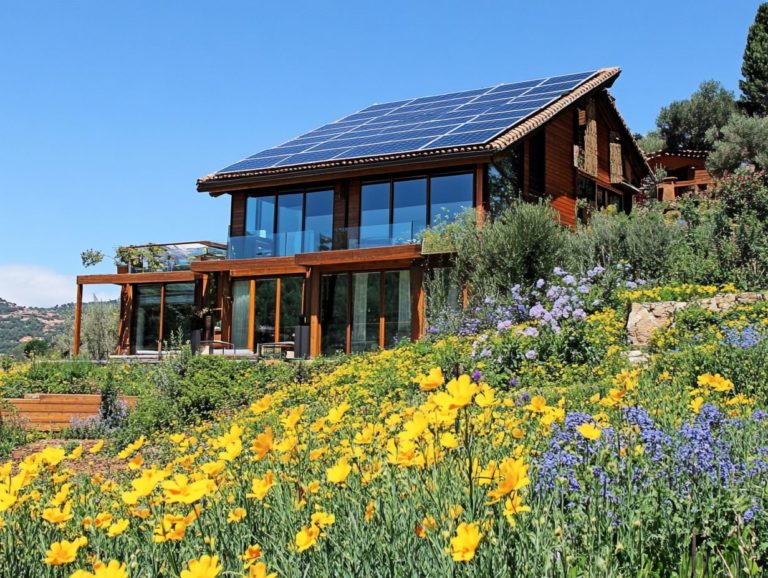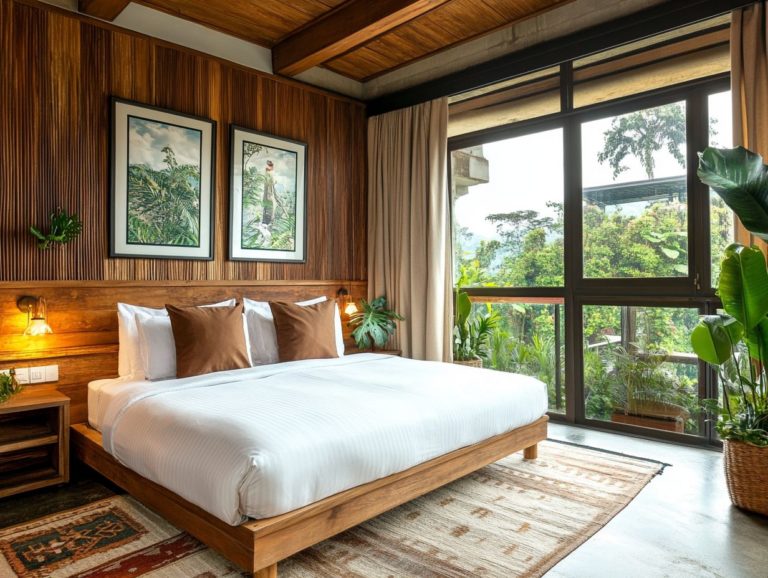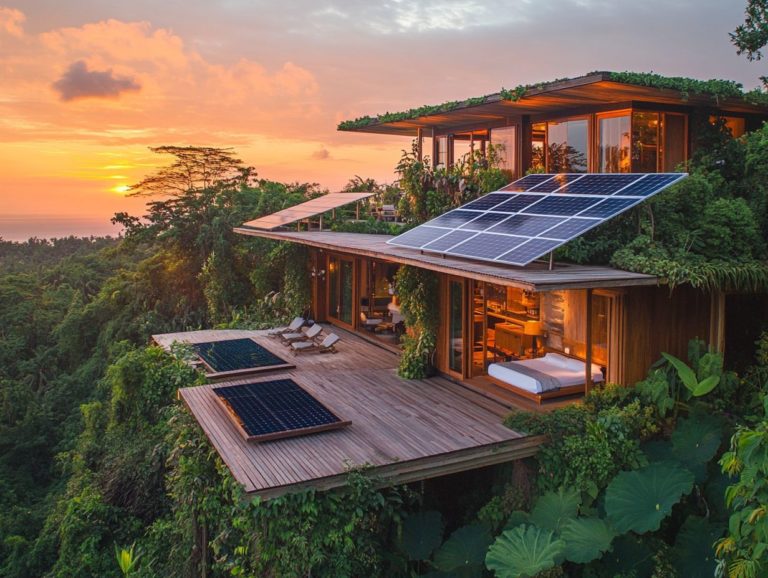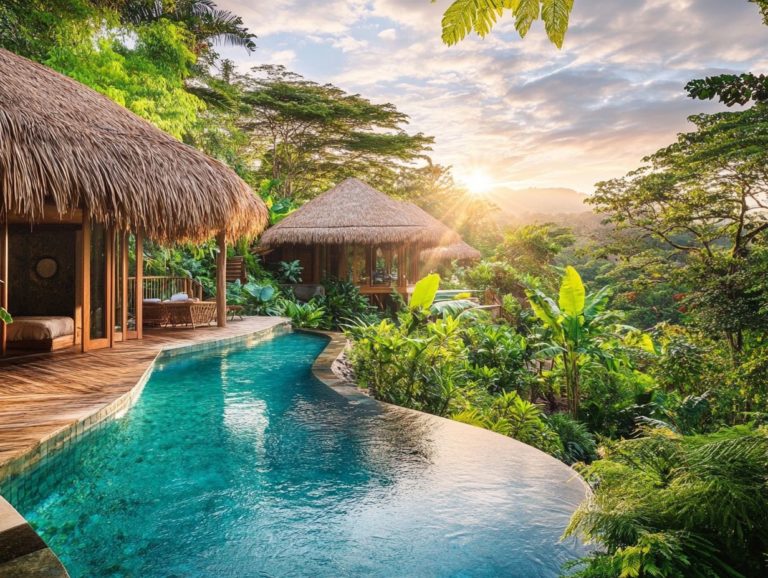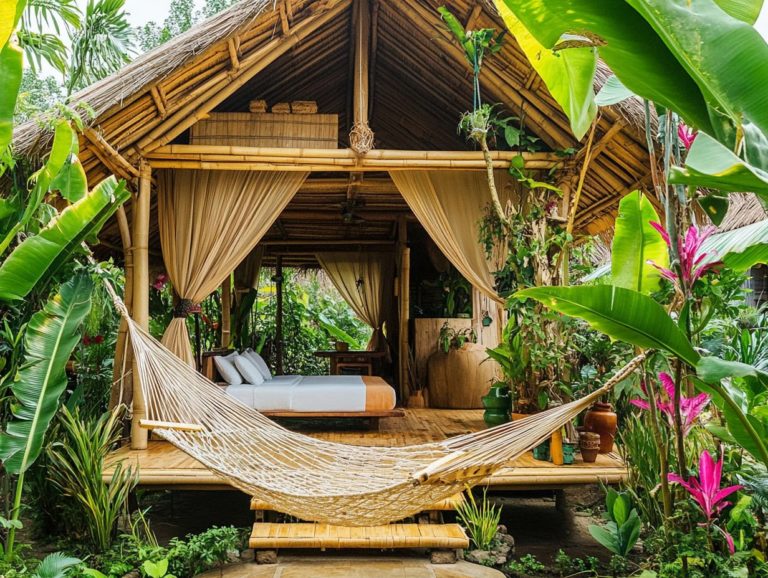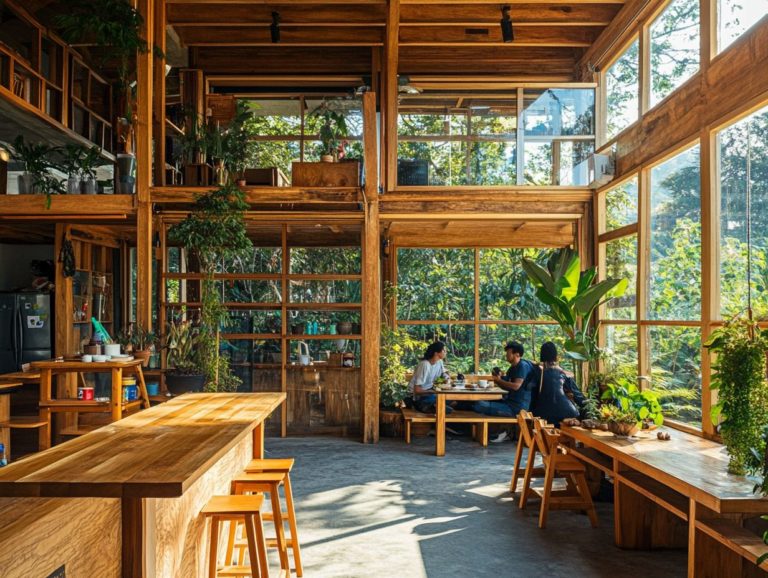How to Book Eco-Friendly Accommodations
Light is crucial for plant growth, shaping everything from their development to their overall health.
By grasping how various types of light both natural and artificial impact plants, you can greatly enhance their vitality.
This article delves into best practices for selecting the right light sources, detailing the specific lighting needs for popular plants, and highlighting common mistakes that gardeners often make.
With these insights, you can ensure that your greenery flourishes under optimal lighting conditions.
Contents
- Key Takeaways:
- Understanding the Importance of Light for Plants
- Types of Light for Plants
- Choosing the Right Light for Your Plants
- Providing Adequate Light for Different Types of Plants
- Common Mistakes in Lighting for Plants
- Tips for Maintaining Healthy Light Levels for Plants
- Frequently Asked Questions
- What is the importance of light for keeping plants healthy?
- How much light do my plants need?
- What are some signs that my plants are not getting enough light?
- How can I provide enough light for my indoor plants?
- Can too much light be harmful to plants?
- How can I tell if my plants are getting the right amount of light?
Key Takeaways:
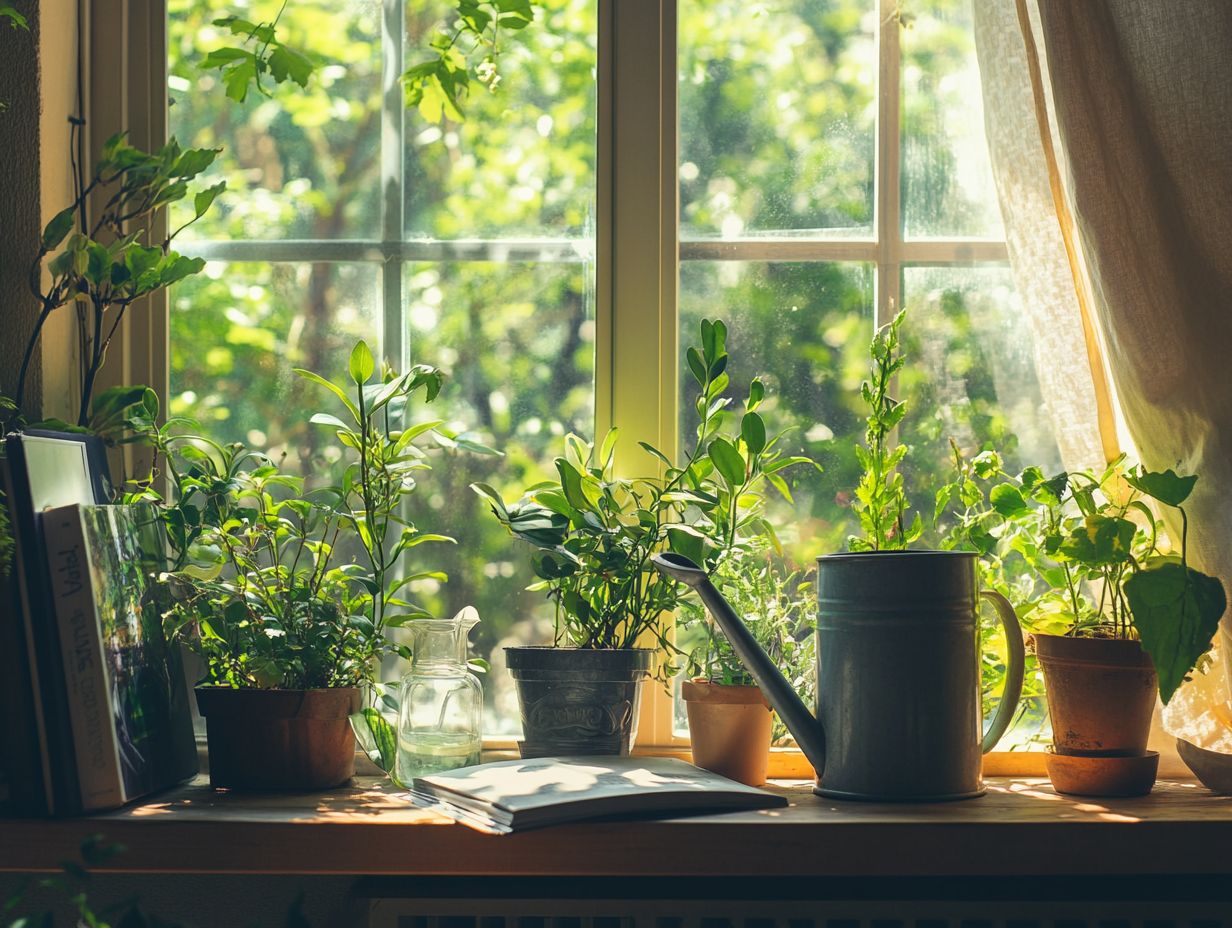
- Light is crucial for plant growth and development, influencing factors such as photosynthesis, flowering, and fruiting, essential for houseplants and indoor gardening.
- When selecting light for plants, consider factors such as intensity, duration, and spectrum to ensure the best growth and health of your plants.
- Avoid common mistakes like overexposure or using the wrong type of light to maintain healthy light levels for your plants. Regular maintenance and proper care for your light sources are also important for optimal plant health.
Understanding the Importance of Light for Plants
Understanding the significance of light for plants is essential for anyone engaged in indoor gardening. It profoundly impacts the health, growth, and vitality of houseplants and seedlings.
Without the appropriate lighting systems, your indoor plants may suffer from insufficient light exposure. This can result in spindly seedlings and leggy plants that struggle to thrive.
Experts like Megan Hughes and Joseph Tychonievich stress that grasping the varying light requirements is vital for achieving optimal plant health and aesthetic appeal in your home gardening endeavors, especially when using grow lights.
How Light Affects Plant Growth and Development
Light is an essential ingredient that profoundly influences your plants’ growth and development. It affects key physiological processes like photosynthesis, flowering, and overall health.
Each wavelength of light plays a pivotal role. For example, blue light promotes lush vegetative growth, while red light encourages beautiful blooms.
The duration of light exposure, or photoperiod, can make or break the vitality of your seedlings, impacting dormancy cycles and blooming times.
Equally significant is the intensity of light. Insufficient light can lead to stretched stems and pale leaves, both signs of stress. Given these considerations, it’s vital for plant care enthusiasts like you to tailor light exposure for various indoor species.
This ensures robust growth and vibrant health through proper light systems.
Types of Light for Plants
Understanding the various types of light suited for plants is crucial for crafting an effective indoor gardening strategy. This knowledge can profoundly impact the health and growth of your houseplants, including African violets, basil, and ZZ plants.
Natural vs Artificial Light Sources
Natural sunlight is often considered the best light source for plants. However, recognizing the advantages of artificial light, such as LED bulbs, can unlock a world of possibilities for you, especially if your growing conditions aren t perfect.
While sunlight provides a full spectrum of wavelengths crucial for photosynthesis, artificial light offers the flexibility to create controlled environments that meet the unique needs of your plants. This makes it a critical tool for any indoor gardener.
Take LED grow lights, for example. They efficiently mimic the sun s spectrum while using less energy. This can help you extend your growing season, even in bustling urban areas!
It s important to remember that relying too much on artificial sources can lead to problems like overexposure or insufficient light. This highlights the need for careful adjustments in light intensity and duration.
With the right setup perhaps DIY grow lights specifically designed for your plants you can transform your indoor space into a flourishing oasis! Skillfully balance light availability with other critical growth factors.
Choosing the Right Light for Your Plants
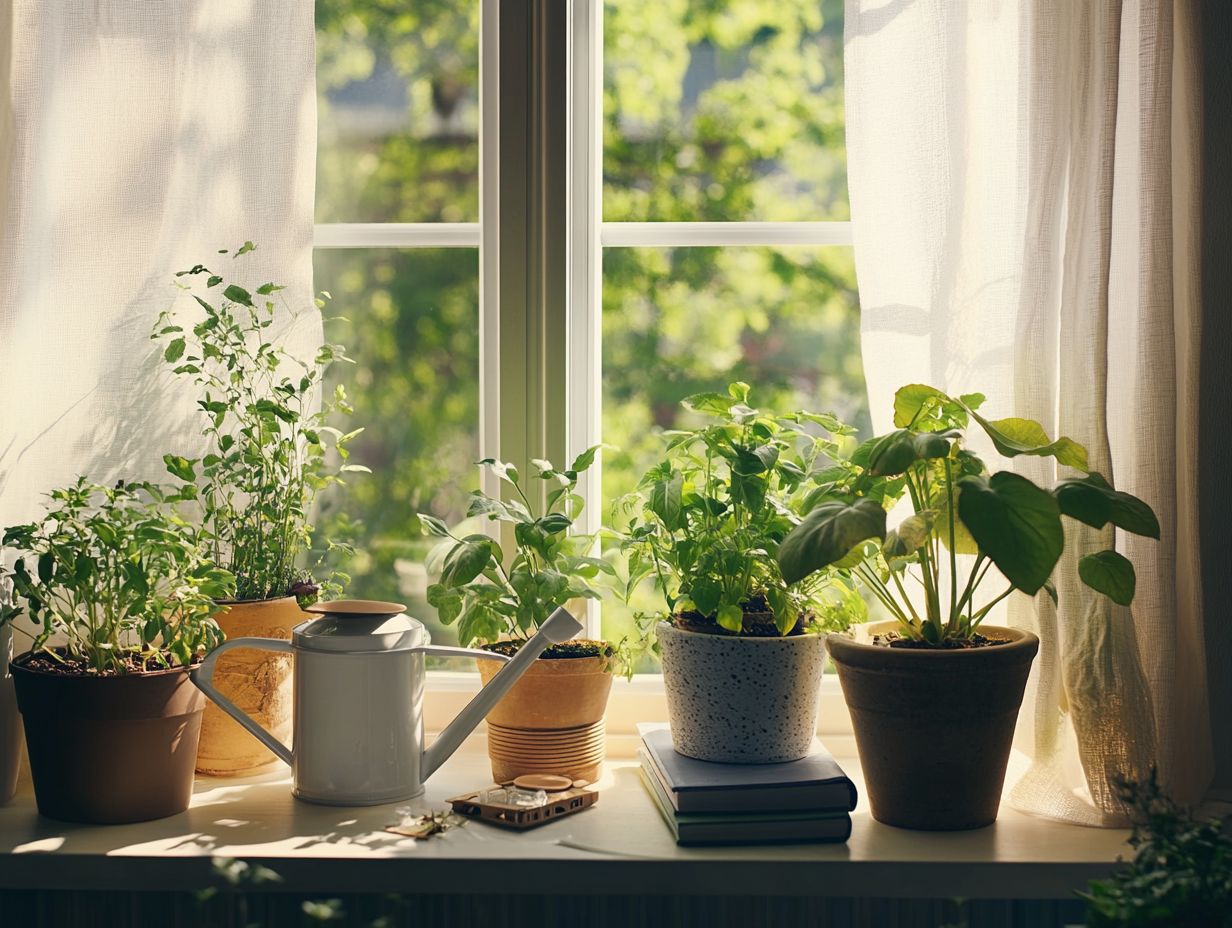
Selecting the perfect light for your plants is essential for promoting their best growth and health. Different species have unique light requirements that dictate not just the type of light they need, but also the intensity and duration of exposure.
Factors to Consider When Selecting Light
When choosing light for your indoor plants, pay attention to several factors. These include the specific light intensity required, the duration of light exposure, and the overall energy efficiency of your lighting system.
Grasping these elements is crucial for healthy plants and energy savings. For example, succulents thrive under higher light intensities and typically require around 12 to 14 hours of light daily, while shade-loving varieties prefer significantly less. To learn more about providing the right lighting conditions, check out this guide on how to manage light for tropical plants.
Choosing the right grow lights can make your plants thrive like never before! Opt for grow lights that allow for adjustments in both intensity and timing. The market offers lights that use less electricity, such as LED grow lights, which emit less heat and have a longer lifespan.
Choosing energy-efficient lighting options helps support your plants’ health while reducing your carbon footprint.
Providing Adequate Light for Different Types of Plants
Understanding the specific light requirements of various plants is essential for their thriving, especially when cultivating popular indoor varieties such as the Fiddle Leaf Fig, Snake Plant, and Boston Fern.
Each type of plant has unique needs, and meeting these light requirements is key to ensuring their health and vitality.
Specific Light Requirements for Popular Plants
As a plant enthusiast, understanding the specific light requirements for popular plants is crucial. This knowledge helps you cultivate healthy seedlings and vibrant indoor gardens.
Different indoor plants have unique light exposure needs that significantly impact their overall well-being. For instance, Pothos loves moderate, indirect light, making it ideal for cozy, low-light corners. In contrast, Croton craves bright, direct sunlight to flaunt its stunning, colorful foliage. To ensure all your plants thrive, consider learning how to rotate plants for even light.
Meanwhile, Norfolk Island Pine prefers bright, indirect light but can adapt to lower levels if necessary. Mastering the art of balancing these light conditions can dramatically enhance your plants growth and promote stunning foliage, transforming your space into a lush indoor oasis.
Common Mistakes in Lighting for Plants
Many indoor gardeners often overlook essential lighting conditions, which can lead to leggy plants and a general decline in plant health. By paying closer attention to these details, you can cultivate a thriving indoor garden.
Avoiding Harmful Practices
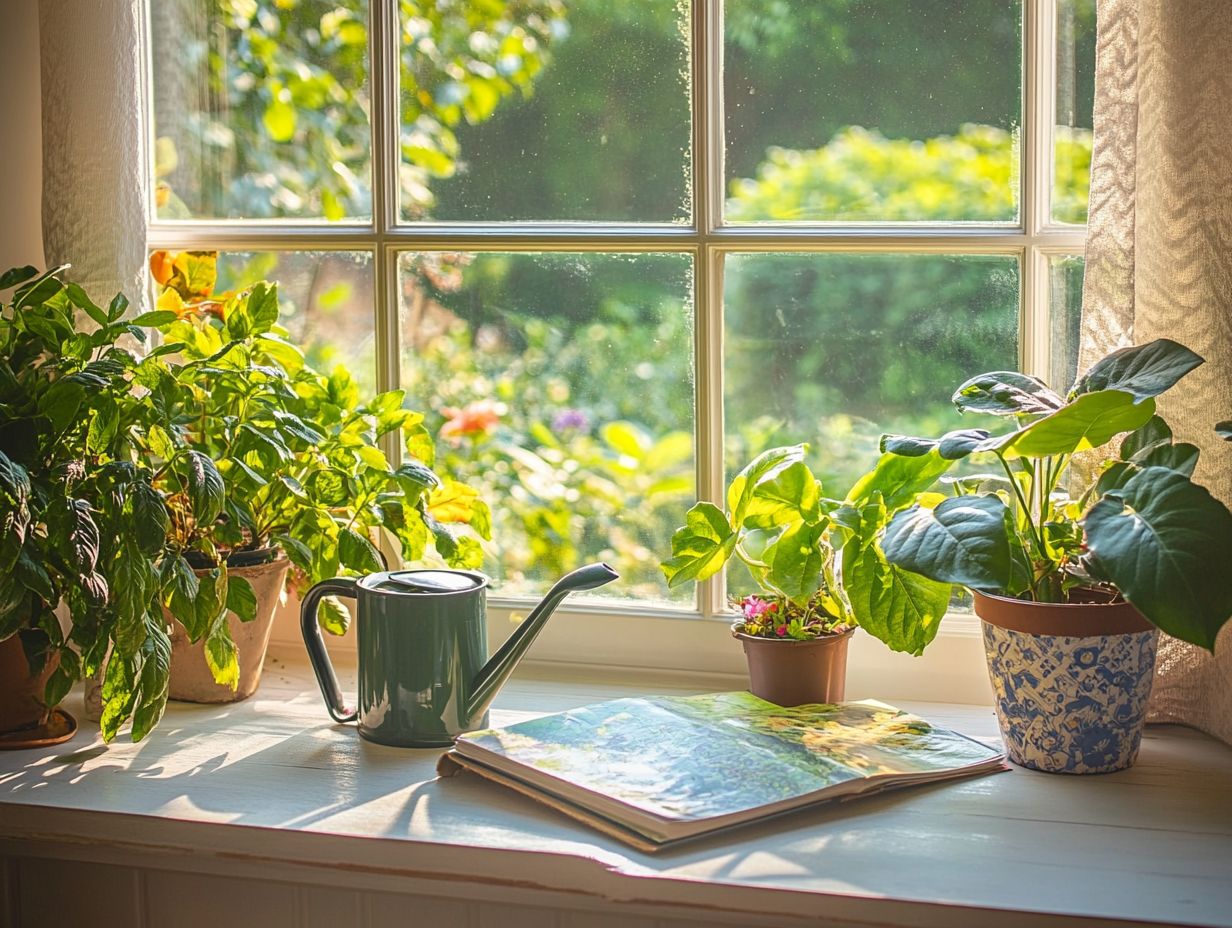
Avoiding harmful lighting practices is essential for ensuring optimal growth and preventing issues like leggy plants and unhealthy seedlings.
Many new gardeners underestimate how critical proper light exposure and duration are. This can lead to under-lit environments that stifle plant development.
Weak stems can develop from insufficient light, while excessive or erratic lighting schedules might cause stress, resulting in dropped leaves or stunted progress.
To mitigate these risks, it’s crucial to understand indoor plant light needs for each plant species you care for. Best practices include:
- Providing at least 6 to 8 hours of indirect light daily
- Rotating plants regularly to ensure even exposure
Start experimenting with different light setups today to see how your plants respond! For more tips, check out this guide on how to position plants for best light. Investing in grow lights that mimic natural sunlight can greatly enhance your indoor gardening efforts and help your plants thrive.
Tips for Maintaining Healthy Light Levels for Plants
Maintaining optimal light levels for your plants is essential for achieving success in indoor gardening. It ensures that each plant receives adequate light exposure to thrive, leading to robust and healthy growth.
Best Practices for Light Maintenance
Implementing best practices for light maintenance can significantly enhance your grow light setup. This includes utilizing strong grow lights and ensuring your indoor garden thrives under energy-efficient lighting solutions.
By regularly adjusting the height and intensity of your grow lights, you can customize the illumination to meet the specific needs of different plant species. Additionally, using sunlight for indoor plants effectively can further enhance their growth. Monitor changes in your plants’ behavior like leaf curl or stretching as these serve as crucial indicators of whether the light conditions are just right or in need of adjustment.
Using timers can boost energy efficiency by creating a consistent amount of light plants get each day, fostering healthier growth. Remember to monitor light exposure for healthy plants and clean your light fixtures regularly to maximize light output; this not only benefits your plants but also extends the lifespan of the bulbs, making your gardening experience more sustainable.
Frequently Asked Questions
What is the importance of light for keeping plants healthy?
Light fuels your plants’ growth and keeps them healthy! It is the primary source of energy for photosynthesis, allowing plants to produce food. Without enough light, plants may become weak, stunted, and more susceptible to diseases.
How much light do my plants need?
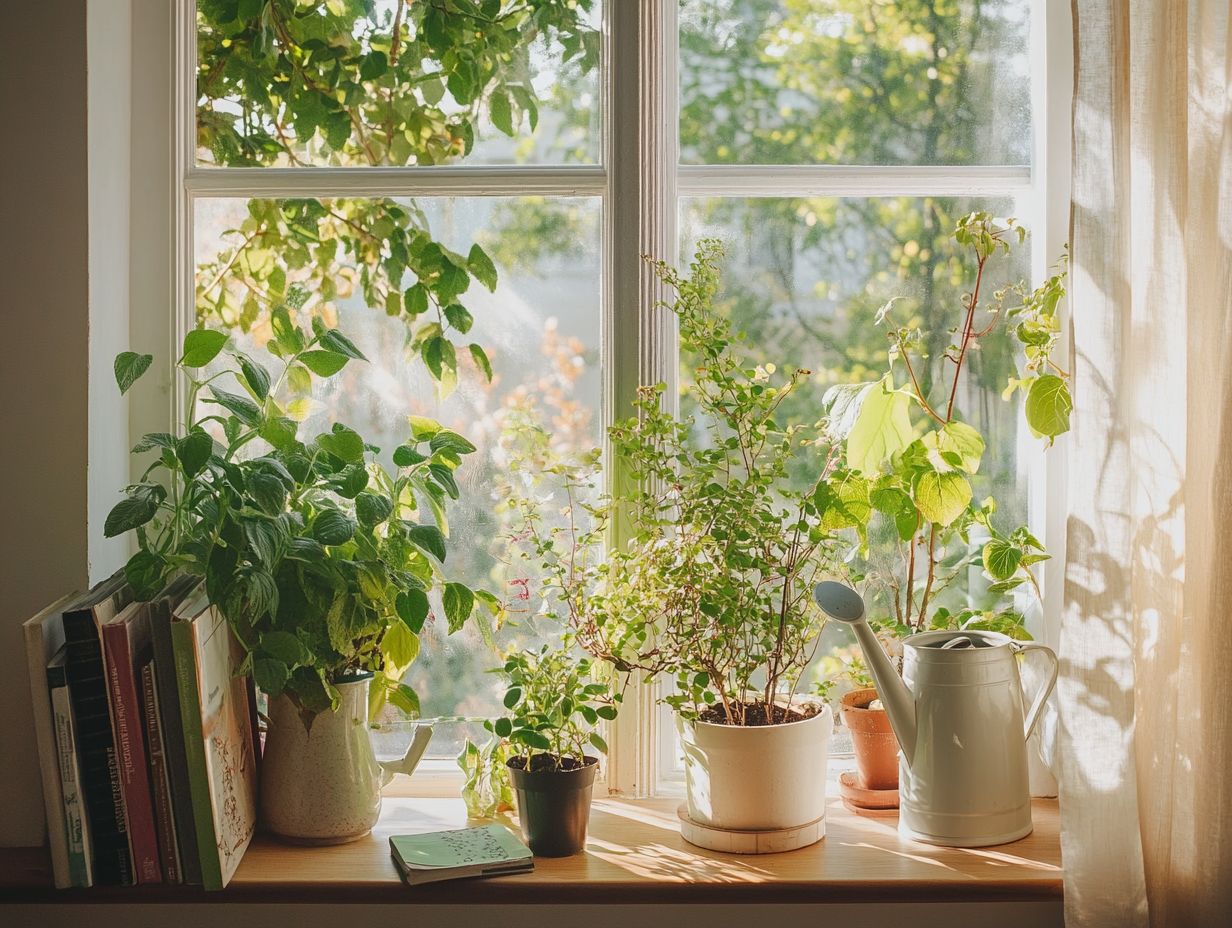
The amount of light needed for plants varies depending on the type. Generally, most plants require 6-8 hours of direct or indirect sunlight each day. However, some shade-loving plants may only need 3-4 hours of light, while others that thrive in full sun may need 10-12 hours.
What are some signs that my plants are not getting enough light?
If your plants are not getting enough light, they may display symptoms such as pale or yellowing leaves, slow growth, and leggy stems. They may also start to lean towards the light source or develop smaller leaves than usual.
How can I provide enough light for my indoor plants?
If your indoor plants are not getting enough natural light, you can supplement with artificial light sources. Use full-spectrum grow lights that mimic natural sunlight and place them 6-12 inches above the plants. Keep the lights on for 12-16 hours a day to provide adequate light for your plants.
Can too much light be harmful to plants?
Yes, too much light can be harmful to plants as well. Excessive direct sunlight can cause leaves to wilt, turn brown, or even burn. It can also dry out the soil quickly, leading to dehydration and stress for the plants. Make sure to monitor your plants’ light exposure and provide adequate shade if needed.
How can I tell if my plants are getting the right amount of light?
One way to tell if your plants are getting enough light is by paying attention to their growth and appearance. If they are growing and thriving, chances are they are getting enough light. However, if they show signs of stress or poor growth, it may indicate that they need more or less light.
Don’t wait! Adjust your light settings today for a thriving garden. If you have further questions or want to share your experiences, feel free to reach out!

